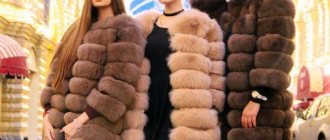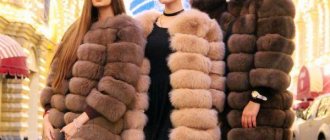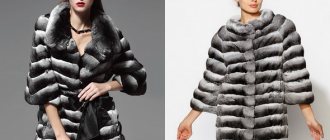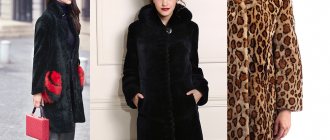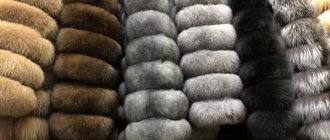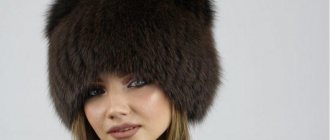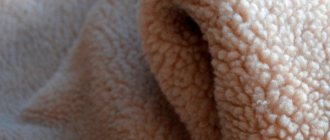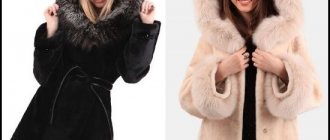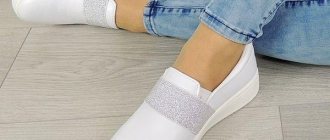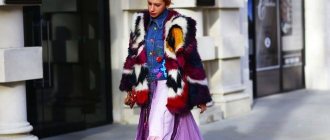Chinchilla fur has become widely known thanks to chinchilla fur coats and coats. Its price has always been quite high. Fur was brought to European countries after the Spanish conquest of South America and immediately “entered the royal court.”
Just like clothes made from ermine fur, chinchilla fur coats could only be afforded by crowned heads. Due to the small number of animals of this breed and the fashion for their fur, chinchillas have almost completely disappeared.
Chinchilla fur coats in the photo
About a century ago, French breeders figured out how to raise chinchillas in captivity, but despite this, chinchilla fur continues to be the most expensive and exclusive.
Chinchilla fur coats
Features and Benefits
Chinchilla fur is thick, up to 3 cm long. It does not smell, since there are no sweat glands on the animal’s skin. The three-color color transition from gray to blue and white is effective. The softness and airiness of chinchilla cannot be compared with any other. Despite the volume, the coat is light, pleasant to the touch, and reliably protects from wind and frost.
Wear resistance is low. A chinchilla fur coat is not intended for everyday wear; it is easily wiped off when it comes into contact with objects - jewelry, a bag. For this reason, it is rarely worn, trying not to combine it with accessories that could damage the fur.
Features of the formation of chinchilla fur
Thick and beautiful chinchilla fur begins to form from the moment of birth. Newborn puppies are born fully formed, covered with baby fur, which may be unevenly distributed over the body. It is usually thicker in the neck and back area than on the tummy and sides.
At the age of three, puppies enter the first period of growing up: the fur becomes silkier, the skin is still fragile, but acquires elasticity. At this age, young animals undergo their first molt, which is accompanied by the production of melanin. At the end of the molt, the fur will take on its adult color and the skin will turn bluish.
Starting from six months of age, the period of fur maturation begins. Typically this period lasts about three to four months.
Young animals that are not intended for breeding are slaughtered at the end of the maturation period. Further cultivation is not profitable: the animals stop growing, there is a high risk of fur damage in games, as well as the appearance of skin parasites.
Models
Simple models are sewn from chinchilla fur so that attention is directed to the beauty of the fur. Experienced designers skillfully select skins, creating spectacular color transitions and luxurious stripes. By sewing them crosswise, long fur coats are created.
Most often, fashion designers offer short sheepskin coats, vests, capes, and boleros. The absence of a hood can be explained simply - the fur rubs and loses its attractiveness.
Fur cleaning
The owner of a chinchilla farm needs to know not only about the rules for dressing skins, but also how to clean chinchilla fur at home. The ability to clean fur will be useful both for the finished product and for the dirty workpiece.
A wet item must be dried thoroughly before cleaning. To do this, just lay it out on a flat surface in a well-ventilated area and leave it for a while. Using a hair dryer or any heating device can shorten the drying time, but will ruin the quality of the fur.
Before cleaning, it is better to comb the fur with a blunt-toothed comb. You can restore fluffiness by first combing in the direction of hair growth, and then against it. It is best to clean the fur with bathing sand for chinchillas. It is poured onto the product, lightly rubbed and left for half an hour. After which you can shake and comb the product again.
There is another way to clean chinchilla fur at home. The wet method uses a soap solution made from water and a small amount of special shampoo or rodents. The fur is cleaned with a sponge soaked in a solution and then wiped with a damp, clean cloth. After the dirt has been removed, the product must be dried and combed.
Selection by length
Young girls prefer short models. Older women choose long ones, preferring midi ones. This is explained not only by the price of the product, but also by the practicality of use.
See also
What’s best to wear with women’s plaid trousers and a review of stylish looks
Short
For those who lead an active lifestyle, a fur coat above mid-thigh is good. Waist-length short fur coats, short jackets, vests, and chinchilla boleros look great.
But it is necessary to wear fur carefully, since even on short models it deteriorates when it comes into contact with different surfaces.
Average
The length from mid-thigh to knee is most often chosen. A midi chinchilla fur coat can hide figure imperfections, and in a fitted version, highlight the advantages.
Models made from sheared chinchilla are cheaper, but look impressive when they are above the knee.
Long
Modern designers create full-length fur coats extremely rarely, since the price of such a product is high and practicality is low. The hem soon takes on an unpresentable appearance due to scuffs, the clothes need to be somehow revived - recut, altered.
How much does a real chinchilla product cost?
This animal is rarely found in the wild, which is why it is listed in the UN Red Book. Today chinchillas are bred in an artificial environment, but this process is by no means easy. It is possible to buy a chinchilla skin, which has a miniature size, at an auction for at least $100, or 7,900 rubles. A skin with an original color is offered even more expensively – from $300. As already mentioned, to sew one fur coat, you will need many chinchillas.
A chinchilla fur coat is valued on average at 60 thousand dollars, or 4.5 million rubles, or more. You can find a model much cheaper - about 10 thousand dollars. However, for such a price it is extremely rare to acquire a fur product, and only if the salon sews its own outerwear and purchases raw materials from a local manufacturer. In this case, the downside cannot be avoided - quality suffers.
Colors
Chinchilla fur is dyed in different colors. It is lightened to achieve the desired shade. Other shades can be obtained through selection. By crossing with small animals, new pastel tones of wool are obtained.
The classic color of a chinchilla is blue-gray, a combination of gray, black, and white. Rare shades include beige, golden, chocolate.
Blue
Extravagant young girls love color. It is obtained as a result of tinting or partial coloring. Shades from blue to dark blue are especially harmonious in short “autolady” models.
Pink
The most popular pink model is short and straight. It suits young girls. More often they choose the shade “pink powder”. It must be remembered that dyeing reduces the service life of a chinchilla fur coat by 2 times.
Black
A black fur coat is universal because it is suitable for women of any age and build.
The gradient coloring looks very original - from black to white, as a result of a gradual transition through gray.
Burgundy
It is not so common to find a burgundy fur coat in designer collections. It looks impressive and goes well with clothes in black and white. It is in demand because of its brightness and saturation.
See also
Hot swimsuit trends 2021, fashion trends and stylish new items
Grey
The gray-blue color of a chinchilla fur coat is classic, natural. Looks very expensive. Suitable for ladies of any age. You can choose gray in different shades - from blue to anthracite.
Dressing chinchilla skins
Dressing chinchilla skins begins with removal, and here it is important that no fat, blood or water gets on the fur. Otherwise, the workpiece will be damaged. The removed skin is cleaned with the blunt side of a knife from remaining fatty tissue, blood clots, and films. Then it is laid out on a flat and clean surface and the tail and paws are aligned. After the skin is cleaned and smoothed, it is stretched on a frame to dry.
Typically, the drying process takes no more than two days at a room temperature of no more than +15 degrees. If processing is not planned immediately, then the skin can be placed in the refrigerator, where it will be stored for several months without loss of quality and integrity.
The processing process begins by preparing a mixture of nine parts salt and one part aluminum sulfate. The salt must be crushed - otherwise the crystals will scratch the delicate skin of the workpiece. The resulting mixture is mixed with fine sawdust from deciduous trees. If the skin is wet, increase the amount of sawdust. For normal skin the ratio is:
- Two tablespoons of a mixture of salt and aluminum,
- Four tablespoons of sawdust.
The resulting mixture is sprinkled over the entire skin. The blanks are folded skin side to side and left for six days in a cool room with good ventilation, but without direct sunlight. The skins must be turned over every two days.
After the allotted time, the workpieces are shaken and hung on the crossbars to dry for another three or four days. After which they are stretched on a frame and cleaned of sawdust and salt residues.
Finished chinchilla skins can be stored in a regular cardboard box. Fold them in pairs inside with the flesh and cover them with regular newsprint.
Storage and care rules
To care for a fur coat, perform a number of actions:
- Set aside a place for it in the closet so that there is no contact with other clothes.
- Carry out annual cleaning in a specialized dry cleaner.
- Brush the fur periodically with a soft brush.
- If you are not wearing socks, ventilate your fur coat.
- The cover and hanger are chosen according to the size of the clothing.
- The fur product is completely dried before being placed in the closet.
Drying a fur coat near a radiator or heater is contraindicated.
How to choose the right one
Due to inexperience, the buyer may confuse a chinchilla with the fur of a Rex rabbit. Therefore, when choosing, follow several tips and features:
- chinchilla fur is light;
- the cost of a fur coat is high;
- the length of the rabbit skin is 3 times longer;
- You can distinguish the fur by touch - in a chinchilla it is much softer;
- the product has a wave-like shape due to dips at the junctions of the skins;
- you should pay attention to the smell - a painted rabbit smells like paint;
- You must ask the seller for a quality certificate and a purchase warranty card.
Chinchilla fur and its amazing properties
Main features of fur:
• unusually beautiful, soft, light; • unique density; • unusual structure of the coat (lack of guard hairs); • specificity of cover growth; • resembles fluff and the flesh cannot be felt to the touch; • excellent thermal insulation properties, it is even considered that it is not inferior to the properties of eider down; • uniqueness - no fake can replace it.
Chinchilla fur
The pattern of the fur is similar to that of a chinchilla rex rabbit; such fur does not have a pile of more uniform length and the flesh is rougher; it looks matte in the product and is less interesting, not so voluminous. The structure of rabbit skins - orylag, bred by rex selection, is already more reminiscent of chinchilla. The flesh of these animals is much tougher, the pile is good elastic and wear-resistant. In terms of fur density, they are in one of the first places. Chinchilla fur is so dense due to the unusual structure of the coat, characteristic only of these small animals. A chinchilla hair follicle contains up to 80 microhairs. For 1 sq. mm of fur usually up to 5 bulbs, i.e. that's about 300 hairs. Their angle is almost 90 degrees. This ensures very good fur properties, its density and beauty. Clothes made from this fur keep you warm. The absence of guard hairs is successfully compensated by a large number of hairs in the bulb. The thickness of the hairs in the bulb is only a few microns. The height of the covering hairs is up to 4 cm and from 4 to 8 mm longer than the downy hairs. Moreover, the height of the pile is not the same everywhere. On the back of the animal it is higher, near the belly and sides.
Features of skin quality
It is especially valued in the manufacture of products: • skin, in which chinchilla fur has a more elastic pile (on the fur, traces of finger pressure immediately disappear); • color contrast. The higher it is, the more valuable the skin. Specialists especially value animals with a black back and a snow-white belly.
Chinchilla fur
Color spectrum
The color on the chinchilla's skin gradually changes from dark gray on the back to gray-blue on the sides. And on the abdomen it is snowy white. The color scheme of the fur has a slight bluish tint. The fur cover is uniform, without differences on the surface, comparable to velvet. There are separate zones in the hair: approximately halfway up to the skin, the lower zone is gray, then the zone up to 3 mm wide is white, and then the uppermost zone is dark. The fur of animals that are bred in captivity can be dyed almost any color. However, it is painted quite rarely. The raw materials for dyeing are very valuable and the dyeing technology itself is difficult due to the structure of this fur. With a variety of colors it is easier to breed animals. Numerous works of world scientists for many years have been crowned with success.
When breeding animals, mutational and interspecific hybrid colors are distinguished. The mutation species is divided into recessive and dominant subgroups. The recessive subgroup includes the following main colors: sapphire, beige, white violet, charcoal, variegated and some other popular colors. The dominant group includes the main colors: white, black velvet, beige. Despite its excellent properties, fur has some disadvantages.
Cons of fur
Main disadvantages: • low durability. The attractiveness of fur is quickly lost; • intolerance to moisture; • products are not suitable for constant wear. They are widely used to decorate clothes.
Using chinchilla fur
For the manufacture of clothing and other products, the thick fur of animals raised in captivity is usually used. It is quite wear-resistant. Fur is expensive, elite, and items made from it are unique (luxury).
Chinchilla fur is delicate, soft, light, with beautiful tints and will definitely win the heart of a fashionista and lover of exquisite things. Fur is used to make beautiful fur coats that charm women all over the world. They make stoles and hats. They are also used to make soft mittens and beautiful collars. A fur collar will decorate an outfit, making it expensive, stylish, fashionable and elegant. The chinchilla is a valuable fur and fluffy, funny human pet. They are bred in nurseries and sold as small chinchillas as beautiful, friendly pets. They are very picky eaters and very playful.
Stylish looks
The type of clothing worn with a chinchilla fur coat depends on its length. With a chic, floor-length look, an evening dress and high-heeled shoes are appropriate. A short one perfectly complements a business style - a pencil skirt or trouser suit in combination with stylish shoes with heels or high wedges.
See also
Features and materials of the noodle dress, what to wear with it and fashionable looks
A chinchilla fur cape, like a long fur coat, is a choice for an evening outfit. Jackets and vests are combined with youth style - jeans, skinny trousers, high shoes with flat soles or heels.
The only requirement for all looks is that clothes worn with a chinchilla must be made from high-quality fabrics and have impeccable cut and tailoring.
What colors are there?
Thanks to the successful crossing of a chinchilla with a rabbit, today there is fur from which original fur coat models are created. The skins have almost the same color as natural chinchilla fur. At the same time, depending on the manufacturer, options with completely different shades have appeared.
Now on the fur market you can find products made from blue, ash, cream fur, as well as dark colors. However, experts give the highest rating only to material that has natural colors. These skins have all the necessary qualities, however, their pile is not as long and luxurious as natural ones. Today you can even find products made from red chinchilla, which also find their buyer.
